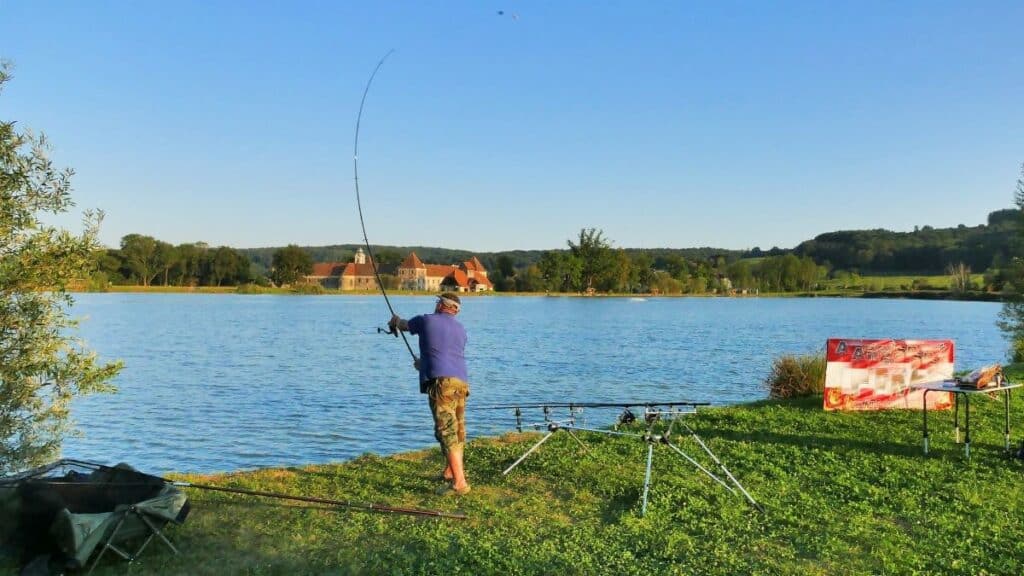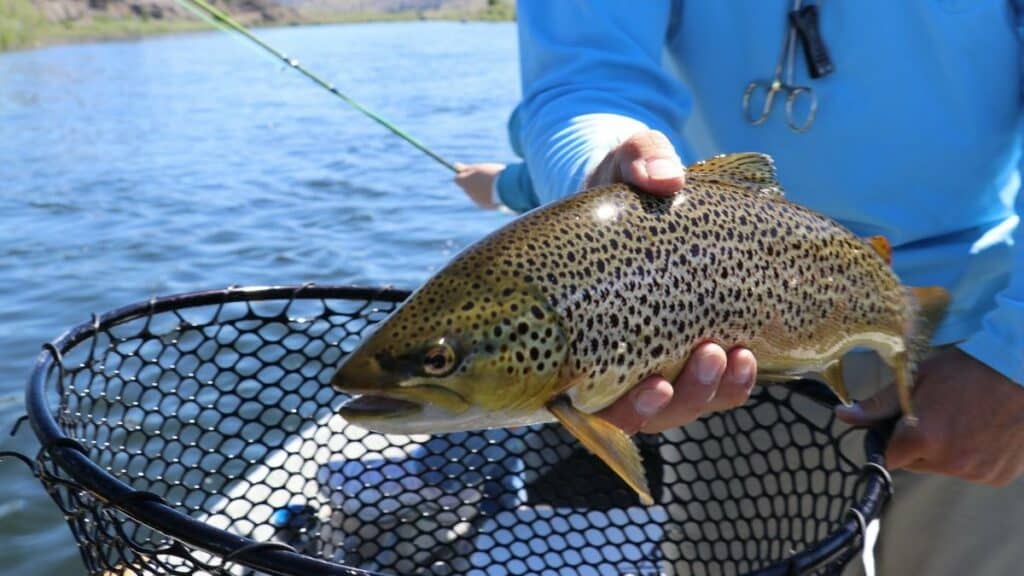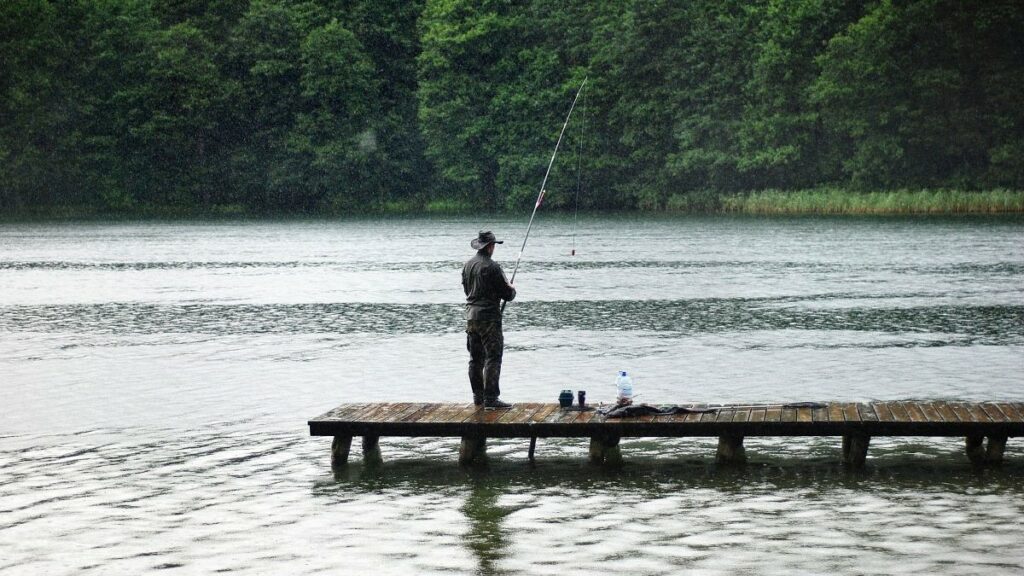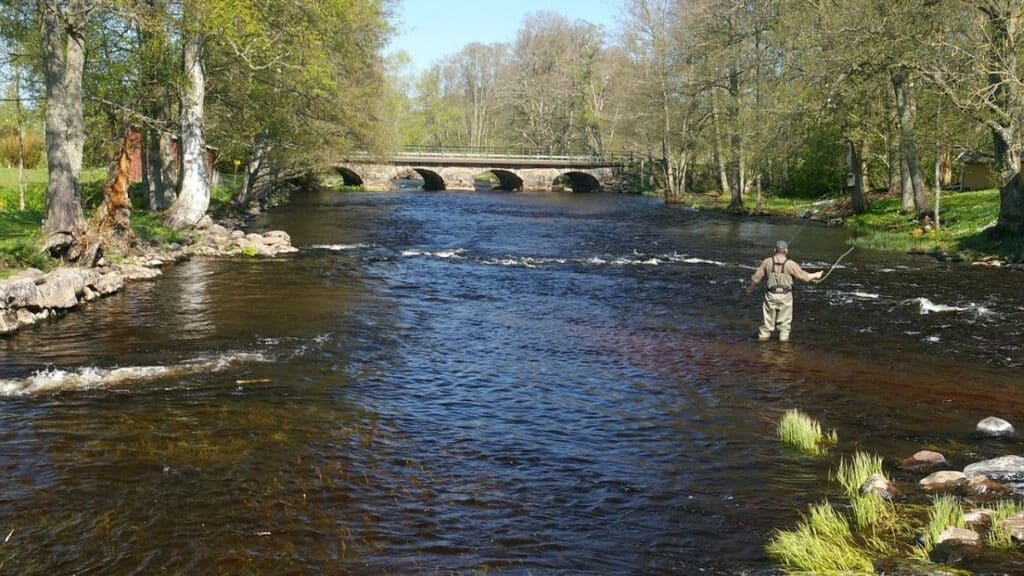Lake fishing is both an art and a science. If you are wondering how to fish in a lake, then you will find this article useful. We have shared some of our best Lake Fishing Tips for Beginners to help you learn How to Catch Fish in a Lake.
What Do You Need to Get Started?
Lake Fishing Rod and Reel Setup
Lake fish species include walleye, Northern pike, sunfish, crappie, muskie, catfish, yellow perch, and trout. You need to pick the rod and reel as per the species you plan to catch.
If you are looking for new fishing gear, then you can check out our pick of the Best Fishing Rod and Reel Combos for Beginners. It can help you pick a quality rod and reel for fishing in lakes.
Go for a sensitive rod you that you can feel the slightest bites. You will also need a floater to help you set the line. Floaters may be cork, porcupine quill, balsa wood, or hollow plastic.
The distance between the hook and the floater will depend on the depth at which you want to fish.
If you want to fish from the bottom of the lake, you first attach the sinker to your line and drop it until it hits the bottom. Then raise the line, about a foot, and then attach the float. This way you are sure that the hook is near the bottom of the lake.

Common Baits and Lures for Lake Fishing
Baits are used to attract the fish. You attach the bait to the hook in such a manner that the fish get hooked after swallowing the bait.
We recommend using natural freshwater baits for catching lake fish. Common natural baits include crickets, minnows, worms, and leeches. You can buy them from nearby tackle dealers at a fair price.
Fish also prefer certain bait at certain times of the year. For instance, bass like crawfish early in the year and shad during the summer and fall.
If you must use artificial lures, we recommend fishing jigs. A jig consists of a lead sinker molded with a hook. It uses a soft body that attracts fish. Move the jig in a jerky, vertical motion. If you are fishing for Walleye, then ensure you are using one of the top-rated walleye jigging rods for a successful catch.
Jigs come in different colors and shapes. Some are fish-head-shaped or cone-shaped. Jigheads also come in different weights. Choose the right weight, depending on the fish you want to catch.

We recommend you try out the red jighead. Fish prefer injured prey. So you can try a red jighead. It has the effect of fooling a fish that the bait is injured. The fish will not hesitate to bite.
Do not discard your torn-up plastic worms. Some fish like to ambush wounded prey, so these would be perfect to use.
If you plan on using dry flies, then you will need a fly fishing rod and a matching reel. You can even use a fly reel under $50 to get started.
Lake Fishing Tips for Beginners
Still Lake Fishing
Let us describe some of the techniques that you may use for lake fishing.
Once you have your fishing gear ready, you will need a boat or a fishing kayak. Travel some distance from the shore as you will not always find fish near the shore.
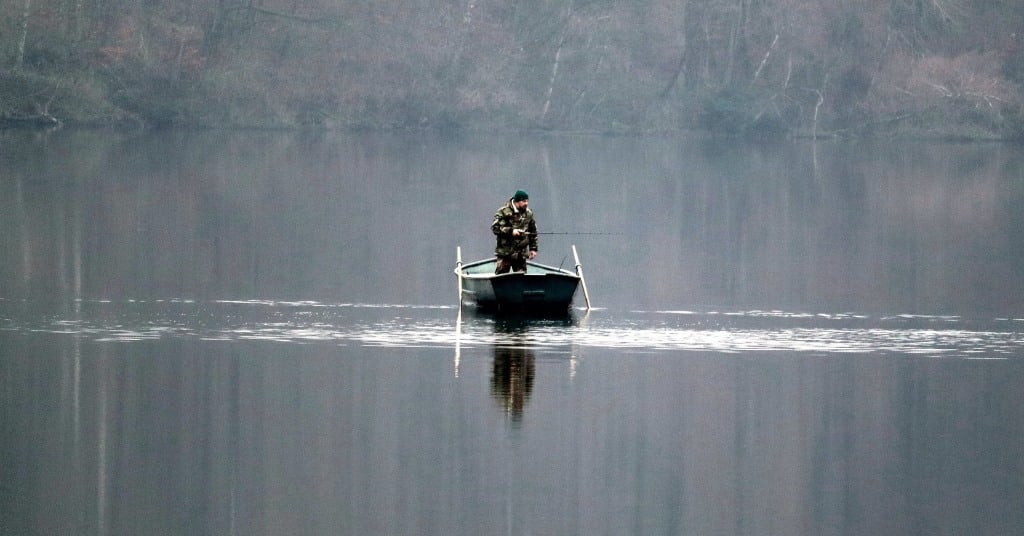
One good method is to anchor the boat at some favorable spot and cast the line.
Attach the hook to some type of sinker, which takes the hook to the bottom of the lake. This method has been in use for thousands of years. The hook is usually baited with lures to attract the fish.
Trolling
Another simple technique you can use is Trolling. This method is great for fishing from a slow-moving boat.
Place your fishing rod on the stern of the boat and hold it at an approximate angle of 45 degrees.
You can use trolling reels or baitcasters. The bait should trail at a distance of about fifty to seventy feet behind the boat.
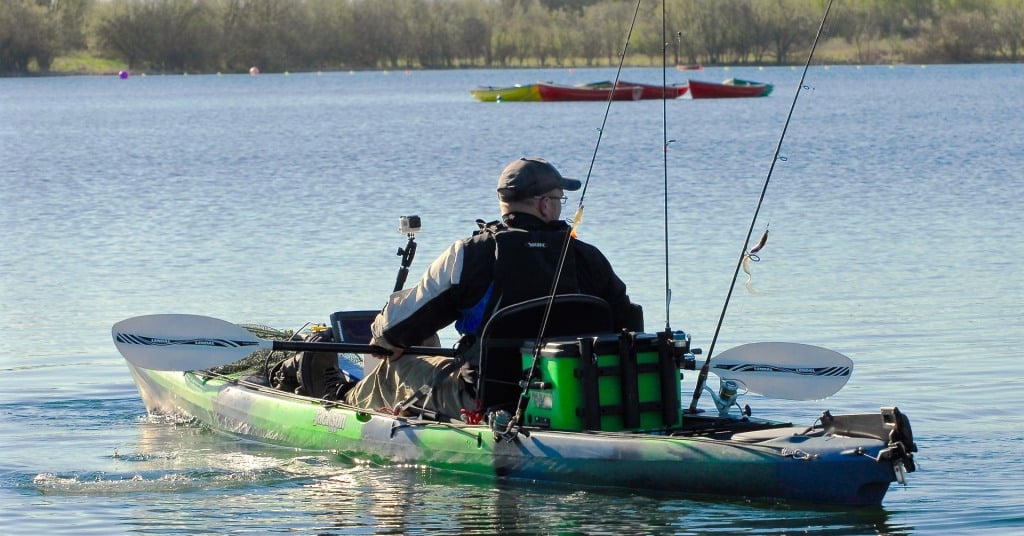
Best Spots for Lake Fishing
Certain areas of lakes have more fish than other areas. You will certainly not want to fish in a dry area. So, what makes an area a hot spot?
Visibility
Fish, like other wild creatures, have an instinct for self-preservation. They need to hide from natural enemies.
Fish develop a camouflage to blend with the background against which they swim. The background thus acts as a cover against predators.
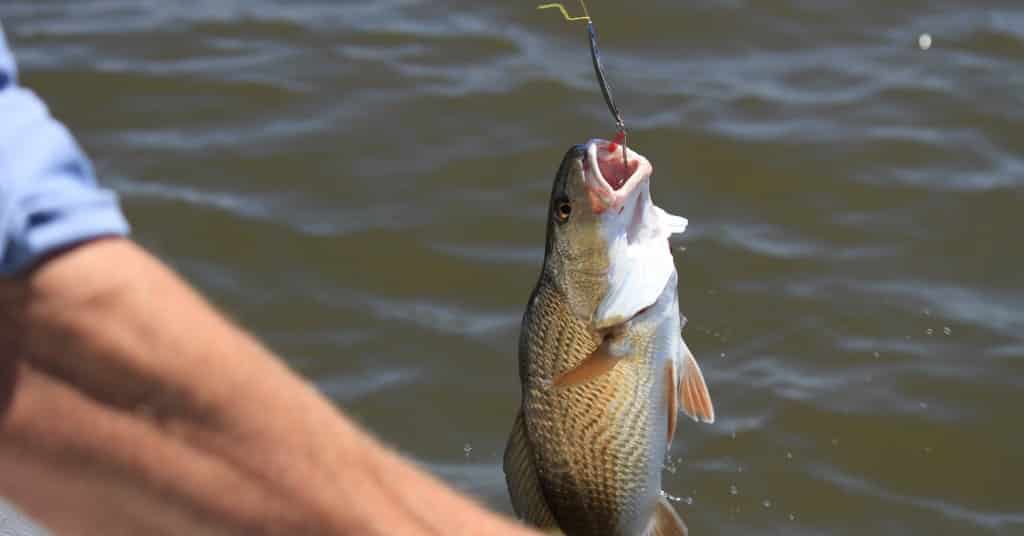
This camouflage goes a long way in creating habits for the fish. As the fish age, they develop a pattern of feeding, which does not change much.
Thus, when you find a lot of fish at some spot, you are most likely to find them at the same spot the next time you go fishing.
Different fish have different preferences about the conditions where they like to live.
For instance, you are unlikely to catch bass fish in the same spot as lake trout. It is best to look for a specific type of fish in the places you are likely to find them.
Water Temperature
Spring comes with good tidings. The shallow waters begin to warm up. Most fish species spawn during this time of the year. The female lays her eggs and then leaves for deeper waters.
The males defend the eggs for a short while, after which they follow the females to deeper waters.
They rest here a few days or a couple of weeks and then return to prowl for food. This movement can help you understand when to fish in the shallows or the deep.
Come summer, the warm water favors the growth of plankton and algae. The baitfish feed and form a pattern of feeding in the shallows and resting in deeper cool waters.
Fall comes with cooler nights. The dropping temperature cools off the shallow waters faster than the deep waters. So, for some period during the fall, the fish will prefer deeper waters.
As fall continues, the cooler waters on the surface move down. The warmer waters in the deep rise toward the surface.
This skews the oxygen level, pH, and temperature. The fish, likewise, become out of balance, and it might be difficult to locate any hot spot.
Structure of the Lake
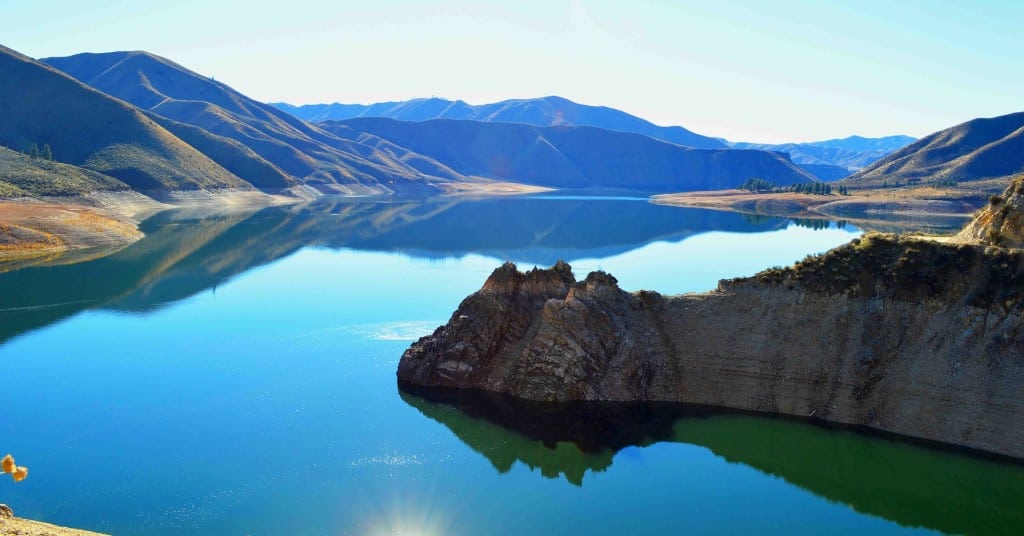
A good place to start fishing would be near the inlet or outlet of the lake.
The temperatures around these areas are cooler and favorable to fish. You will find plenty of baitfish here, along with the big fish that eat them.
Also, consider fishing drop-offs and ledges. The water around these features is deeper and cooler. Drop-offs are preferable to places where the gradient is gentler.
Avoid any sheer cliff or bank that plunges straight down into deep water. These do not provide any structure in which fish can take cover.
The same is the case with a bank that slopes towards deeper water.
What Type of Fish can be found in Lakes?
The first thing we recommend before you leave your home is to do some desktop study. Learn as much as you can about the lake where you plan to fish. Dig for articles related to fishing at your lake of choice. Watch any fishing tournaments if you can and study the results.
Go a step further to identify the fish present in the lake. You can get such information from nearby tackle shops, or local anglers.
You need different techniques to fish for different species. Even the fishing gear may vary. You need a different fishing rod for trout than the one for bass.
If you are a beginner, we suggest you go for the Best Fly Fishing Combo Under $300. This way you can save yourself from the hassle of buying all gear separately. It will also ensure that your fishing rod and reel are compatible.
If possible, get a detailed fishing map. It will give you general information about the lake, deep channels, and shallow areas. You will also get to know the location of coves, inlets, and outlets.
Use this information to plan your trip to the lake. It is not possible to cover the entire lake in one day.
Focus your efforts on one area after the other. Eventually, you will cover the whole lake, even though it may take some return trips.
Lake Fishing 101
Fish Around Sunken Structures
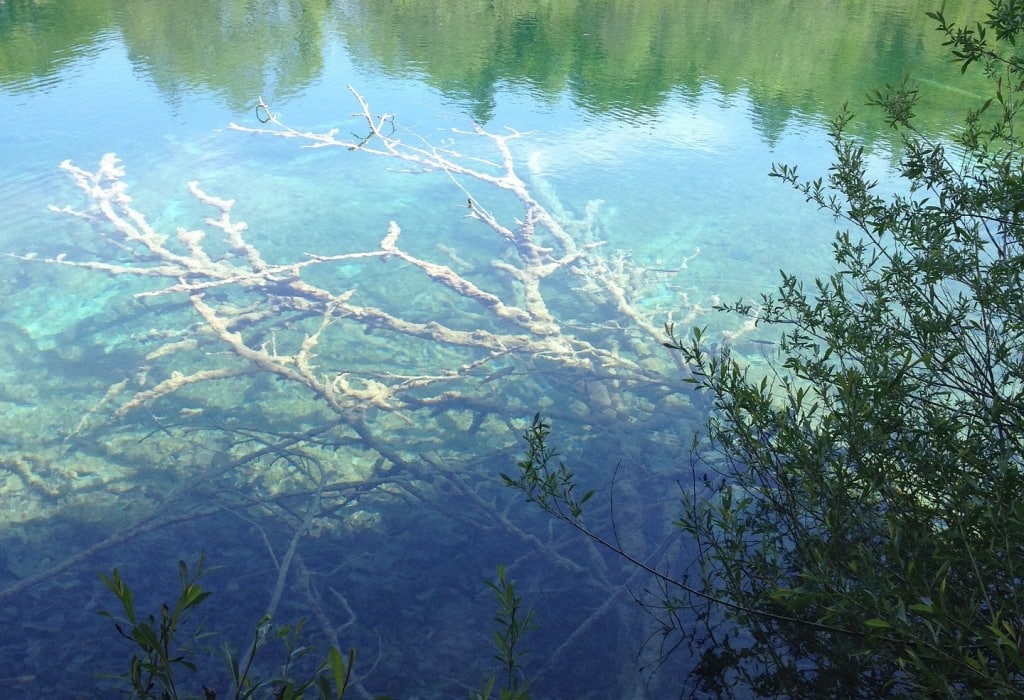
Sunken structures harbor lots of fish. Fish stay around structures that give them good cover. Such structures include downed trees, branches, and man-made fish habitats.
Try fishing around such structures, and you will make a killing. You can also build your own structures if the lake policy allows it.
While around these structures, make sure to watch your line, lest you hit unseen objects.
Fish also like to hang around islands and sandbars. Especially if they create a broken line where the land slopes into deeper waters.
Islands also abound in small plants and aquatic animals. These are brought by the water currents that circle the islands.
Fish Around Weed Beds
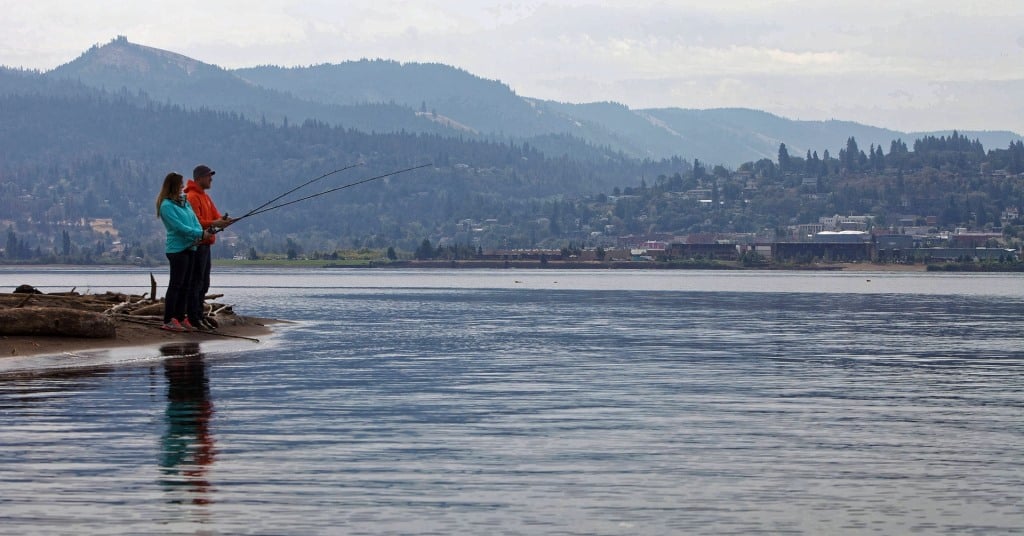
Weed beds are also considered hot spots for most big fish. They provide food and shelter for baitfish, which in turn attract game fish.
For instance, northern pike and largemouth bass like to hunt around weed beds. Look for weed beds and lower your line; you will most likely have good results.
If you need to pick a reel for lake fishing, then check out the Best Spinning Reels Under $100. You will be able to catch most freshwater fish with any one of these reels.
Fish with the Wind in Your Face
A strong wind will push baitfish closer to the shore. The big fish will, in turn, follow the baitfish.
Drift lines on the lake are also signs of abundant baitfish. This is due to the surface food floating around. Follow such drift lines.
As the wind blows, waves break on the shore and increase the concentration of oxygen. High oxygen levels make the fish more active, and you will find them near the shore.
Do not shield yourself from the wind by facing away from it. Instead, fish with the wind in your face. Remember to leave a good distance between your line and your boat. So that fish find the bait before they come across the boat.
The wind also carries away the noise of water slapping against the side of the boat and may scare away fish.
It is also necessary to know the direction the wind has been blowing before you arrive at the lake. Remember, strong winds may be dangerous at times. When the wind picks up, you should consider going along with a guide.
Before a storm arrives, the barometric pressure makes some fish, like bass, more active. It is one of the best times to fish. But, the bass does not come out to feed when it is too sunny.
Pay Attention to the Lunar Phases
Nature dictates that the feeding patterns of fish vary with the position of the moon.
Major feedings occur when the moon is overhead. But when the moon is on the horizon, the fish feed less.
You can watch this video to learn about different moon phases and how to fish them It can help you capitalize on the prime lunar phases.
Final Thoughts
So now you have all it takes to get started fishing on a lake. We hope you find our lake fishing tips for beginners useful.
As you start fishing, remember these things:
- Catching fish is not luck. It requires some knowledge of their feeding patterns and movements.
- Know where and how to catch fish in a lake.
- With the right lake fishing tips and techniques, you will catch the fish you desire.
- Always follow all local and state regulations when out on the lake.
- Wear an inflatable life jacket for fishing to keep you safe around water.
- Don’t forget to carry fishing waders and a rain suit to keep you dry.
I would be glad to know your thoughts on this piece. Feel free to leave a comment below. Also, feel free to share these lake fishing tips with other fishing enthusiasts.

